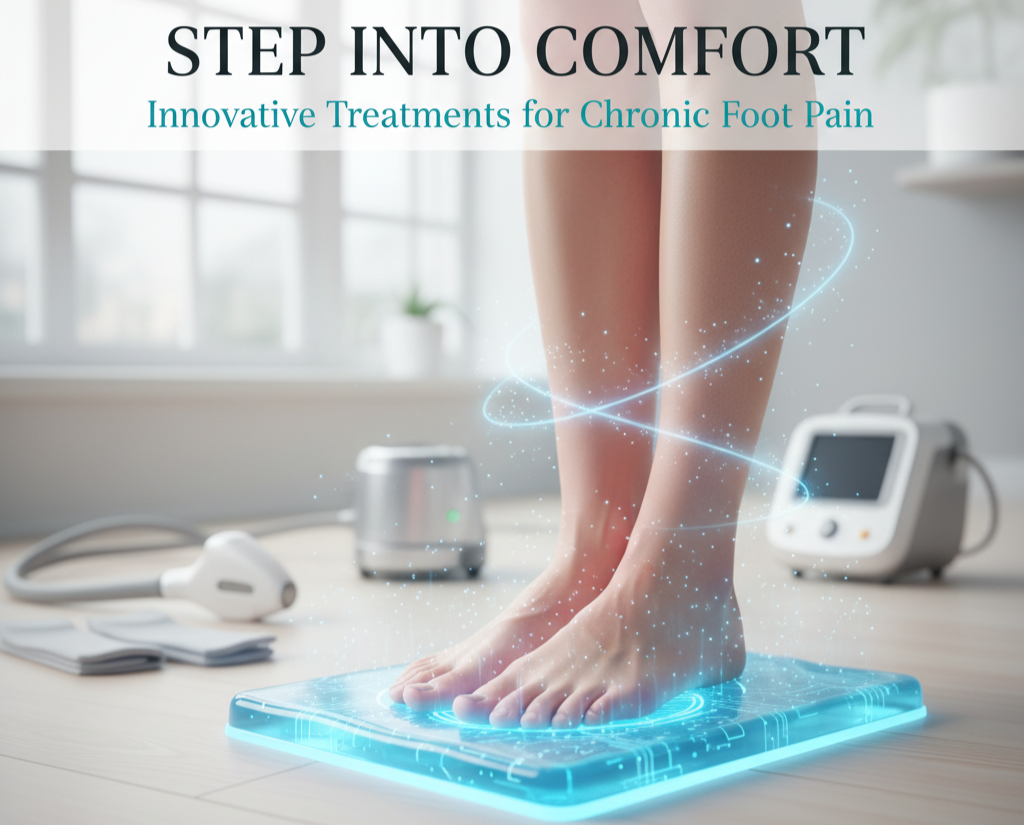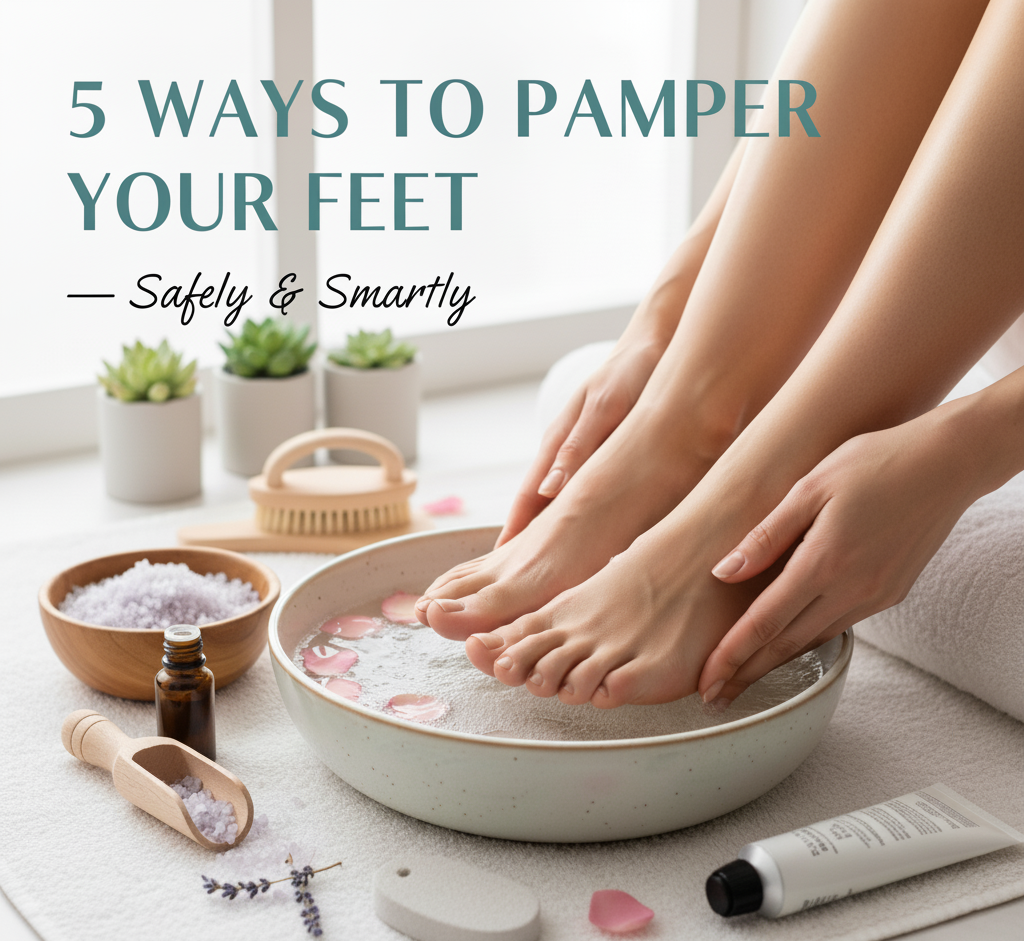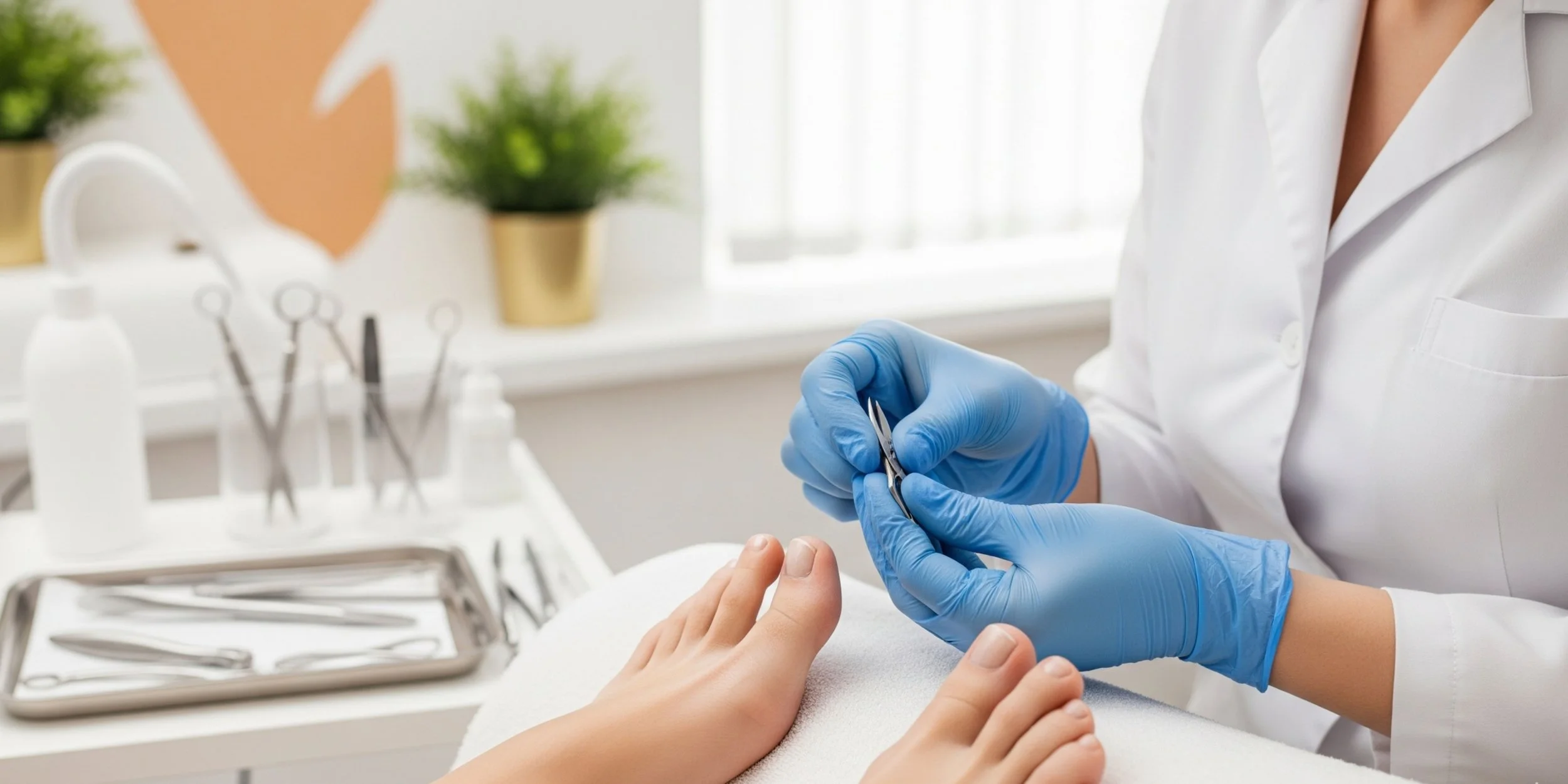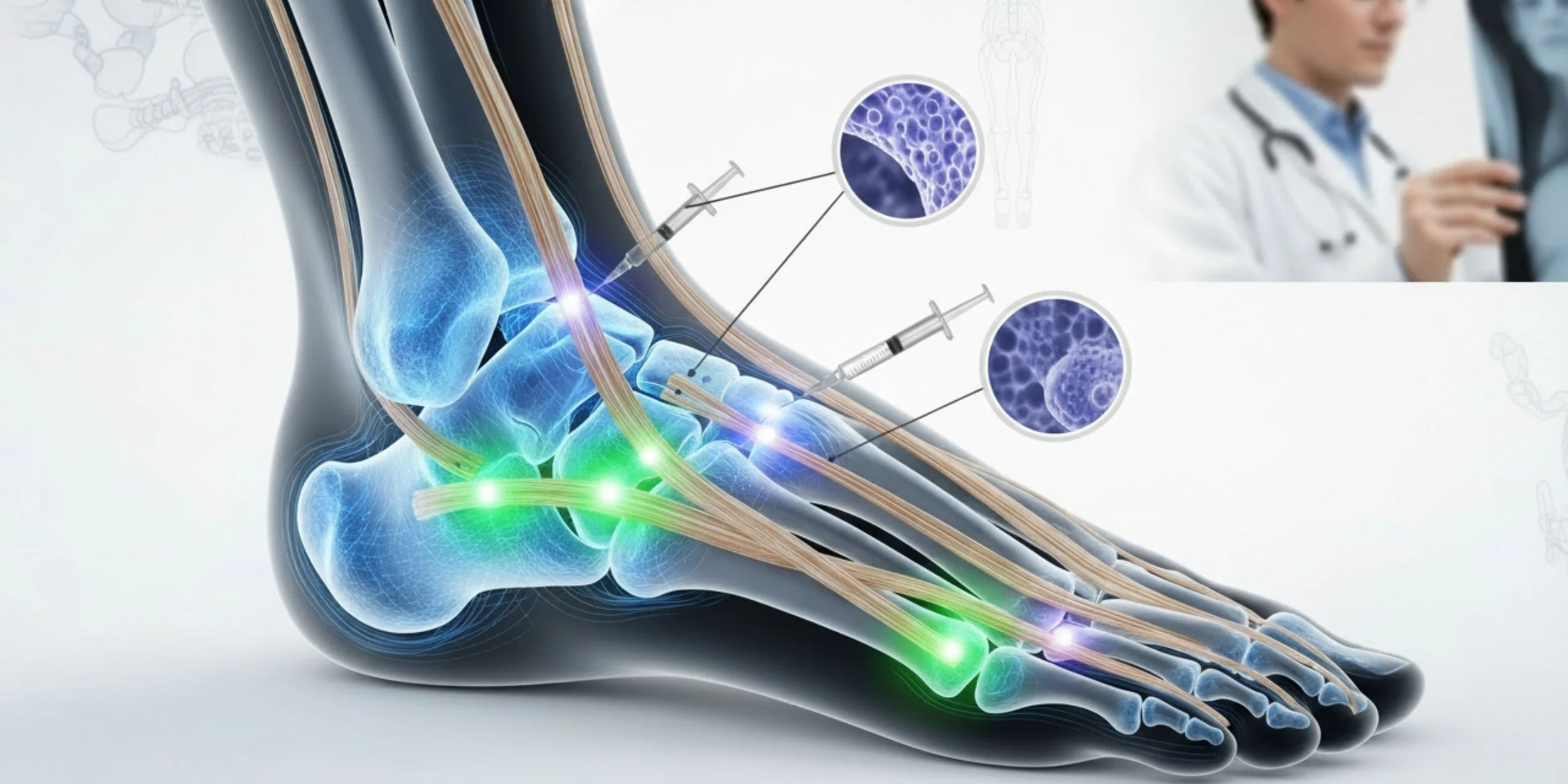From the Ground Up: How Your Feet Affect Your Knees, Hips, and Spine
Have you ever considered how your feet might be the unsung heroes of your body? From the moment you step out of bed to the last stride of the day, your feet play a pivotal role in determining the health of your knees, hips, and spine.
Each movement begins at the ground, creating a cascading effect that influences your overall posture and comfort. Poor foot mechanics can lead to a range of issues — from nagging knee pain to hip discomfort and even spinal misalignment.
In this article, we’ll explore the fascinating connection between your feet and the rest of your body, and how maintaining healthy foot function can transform your overall physical well-being.
Understanding the Foot's Anatomy
The human foot is an intricate structure made up of 26 bones, 33 joints, and more than 100 muscles, tendons, and ligaments. It forms the base that supports your entire body weight, making it a vital part of your musculoskeletal system.
The bones of the foot are divided into three groups:
Tarsals – including the calcaneus (heel bone) and talus, which connects to the lower leg.
Metatarsals – the five long bones in the midfoot that provide stability and propulsion.
Phalanges – the toe bones that help with balance and movement.
These bones are held together by strong ligaments for stability and tendons that connect muscles to bones. The plantar fascia, a thick band of tissue running along the sole, helps maintain the foot’s arch while absorbing shock and distributing body weight evenly.
The foot’s complex design allows it to act as both a mobile adaptor and a rigid lever — adjusting to uneven terrain for balance and becoming firm during push-off for efficient movement.
Understanding this intricate anatomy is the first step toward realizing how your feet influence your knees, hips, and spine — and why caring for them is essential for lifelong mobility.
The Biomechanics of Walking and Running
Walking and running may seem simple, but they rely on complex biomechanics.
Walking is a low-impact, continuous motion where one foot is always on the ground. Each step follows a heel-to-toe pattern that evenly distributes body weight. Your heel strikes first, followed by your midfoot, and finally your toes push off the ground — a sequence requiring coordination across your feet, legs, and hips.
Running, however, involves a flight phase when both feet leave the ground. This high-impact motion places greater stress on your joints and demands more stability from your feet. Runners may strike the ground with their heel, midfoot, or forefoot — each pattern influencing how force travels through the body.
When foot mechanics are off — due to weak arches, poor alignment, or improper footwear — that stress can travel upward, creating a chain reaction that affects your knees, hips, and spine.
Efficient biomechanics are essential to prevent injuries and keep your body moving smoothly from the ground up.
How Foot Structure Impacts Alignment
The shape and structure of your feet directly affect your body’s alignment. The arches of your feet — medial, lateral, and transverse — act like natural shock absorbers. They help you maintain balance and distribute your body weight evenly.
However, deviations in these arches can lead to problems:
Flat feet (pes planus) cause the arches to collapse, leading to overpronation, where the foot rolls inward excessively. This can rotate the knees inward and stress the hips.
High arches (pes cavus) lead to underpronation (supination), where the foot rolls outward, reducing shock absorption and stressing the outer leg, knee, and hip.
When your feet are misaligned, your knees, hips, and spine often compensate — leading to discomfort, poor posture, and potential injury.
Recognizing your foot type and choosing supportive footwear or custom orthotics can restore proper alignment and prevent this domino effect throughout your body.
Common Foot Problems and Their Effects
Even minor foot problems can have far-reaching consequences. Some of the most common conditions include:
Plantar Fasciitis – Inflammation of the plantar fascia causes sharp heel pain, especially with the first steps in the morning. This can alter your gait, leading to compensatory strain in your knees, hips, and spine.
Bunions – A bony bump on the base of the big toe joint that can cause pain, swelling, and walking changes, eventually affecting leg and hip alignment.
Hammertoes – Abnormal bending of the toe joint can cause discomfort and imbalance, forcing the rest of your body to compensate.
Achilles Tendonitis – Overuse or strain on the Achilles tendon causes heel and calf pain, affecting your ability to push off properly during walking or running.
If left untreated, these conditions can disrupt your body’s natural alignment and lead to chronic pain. Addressing foot issues early helps preserve joint health and maintain optimal movement patterns.
The Connection Between Feet and Knee Pain
Your knees depend heavily on your feet for alignment and stability. When your feet roll too far inward (overpronation) or outward (underpronation), the angle of your knee joint shifts, increasing pressure on the surrounding muscles and ligaments.
Overpronation leads to internal rotation of the shinbone (tibia), putting extra stress on the inner knee and increasing the risk of runner’s knee or meniscus tears.
Underpronation causes external rotation, stressing the outer knee and contributing to iliotibial band syndrome and lateral knee pain.
By improving foot mechanics through strengthening, stretching, and proper footwear, you can reduce knee pain and prevent long-term wear and tear.
How Foot Health Influences Hip Stability
Your hips act as the powerhouse of movement, but they rely on your feet for stability.
When your feet roll excessively inward or outward, your leg bones rotate accordingly — affecting the alignment of your hip joints.
Overpronation can cause internal hip rotation, leading to hip strain and even bursitis.
Underpronation can cause external rotation, tightening hip muscles and reducing flexibility.
Over time, poor foot mechanics can cause hip misalignment, uneven weight distribution, and chronic pain. Maintaining proper foot posture and strengthening your glutes, hip flexors, and adductors can greatly improve hip stability.
The Role of Feet in Spinal Alignment
Your spine relies on a stable foundation — your feet. Misaligned feet can cause your pelvis to tilt, throwing off spinal curvature.
Overpronation tends to tilt the pelvis forward, exaggerating the lower back’s inward curve (lumbar lordosis), often leading to lower back pain.
Underpronation can tilt the pelvis backward, flattening the spine’s curve and straining back muscles.
When the base is unstable, your spine compensates, often leading to fatigue, tension, or chronic discomfort. Strengthening your feet and core, wearing supportive shoes, and correcting gait mechanics can help maintain a healthy spine and posture.
Exercises for Strengthening Your Feet
Strong feet support better balance, stability, and alignment. Try incorporating these exercises into your routine:
Toe Curls – Place a towel on the floor and scrunch it toward you with your toes to strengthen the arch.
Heel Raises – Stand with feet hip-width apart, lift your heels slowly, hold for a few seconds, and lower. Repeat 10–15 times.
Ankle Circles – Rotate your ankles slowly in both directions to enhance flexibility and joint mobility.
Marble Pickups – Use your toes to pick up small objects like marbles or pencils to engage intrinsic foot muscles.
Foot Rolling – Roll the bottom of your foot over a massage ball or frozen water bottle to relieve tension and improve circulation.
These exercises can be done daily to promote strong, flexible, and pain-free feet.
Choosing the Right Footwear for Joint Health
The shoes you wear can either protect or harm your joints. Here’s what to look for:
Arch Support: Helps maintain proper alignment and prevents overpronation or underpronation.
Cushioning: Absorbs shock, reducing stress on your feet, knees, hips, and spine.
Fit and Stability: Ensure the heel and midfoot are snug, with enough toe space for natural movement. Look for a firm heel counter and supportive midsole.
If you have unique foot mechanics or chronic pain, custom orthotics may provide additional correction and comfort.
Conclusion: Prioritizing Foot Health for Overall Well-Being
Your feet are the true foundation of your body. Every step you take affects the alignment and function of your knees, hips, and spine.
By understanding the intricate link between your feet and your musculoskeletal health, you can take proactive steps to improve your posture, reduce pain, and move with ease.
Strengthen your feet, choose supportive footwear, and address foot issues early. Doing so not only enhances mobility but also supports your overall quality of life.
Take care of your feet — and they’ll take care of you, from the ground up.
Ready to stop pain at its source?
Your feet could be the key to lasting relief from back, knee, or hip pain.
Schedule a foot evaluation with Dr. Tea Nguyen at Pacific Point Podiatry and restore balance from the ground up.











